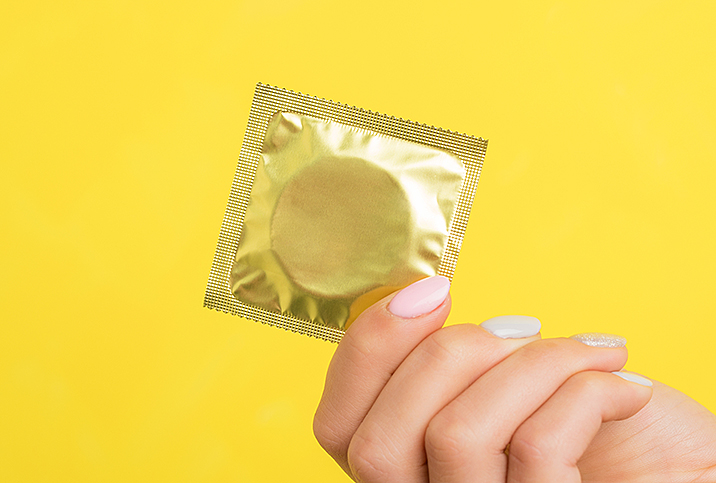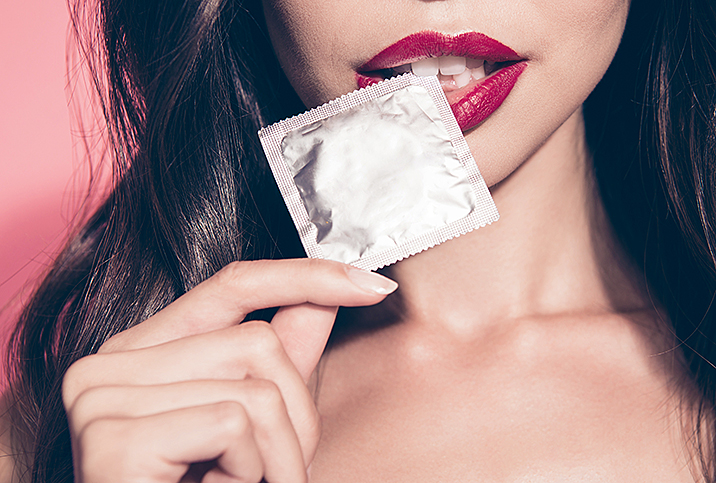If You Have a Latex Allergy, Condoms May Be Hazardous for Penis Health

Condoms represent one of the most affordable, accessible and effective means of protection against sexually transmitted infection (STI) and disease (STD), and unplanned pregnancy. Unfortunately, for people with latex allergies, conventional condoms can quickly turn a fiery desire into a burning sensation of an entirely different kind.
The good news is there are plenty of alternative ways to practice safer sex without sacrificing comfort, including hypoallergenic condoms that offer many of the same benefits as latex minus the side effects.
What causes a latex allergy
Often, a latex sensitivity or allergy is triggered by a protein in the rubber tree, from which latex is derived. When the proteins enter the body, the immune system mistakenly perceives them as dangerous invaders. It then launches an attack, causing symptoms that include dermatitis and anaphylaxis.
A latex sensitivity typically resembles a mild allergic reaction, said Paul Thompson, M.D., a Fort Worth, Texas-based urologist and surgeon and the chief medical officer for Launch Medical, a Los Angeles men's sexual health company.
"There is often redness, swelling or sensitivity where the condom is or was," Thompson added. "You may even notice skin peeling a day or two later. Latex sensitivity can also cause coughing and sneezing like a seasonal allergy."
A full-blown allergy causes a more severe reaction affecting multiple body parts. In addition to local redness, sensitivity and swelling, it may produce a body rash or hives, shortness of breath and flu-like symptoms.
Latex allergies are rare. They affect about 4.3 percent of the general population worldwide. However, the prevalence is significantly higher among people in high-risk professions, including health care, because frequent exposure to latex increases a person's likelihood of developing an allergy.
"I would say four to five times per year, I get a patient with an allergic reaction," Thompson said. "While it is rare, it is not something to discount if you have problems or discomfort."
What to use if you have a latex allergy
Safer sex is within reach for latex allergy sufferers, fortunately, thanks to modern chemistry and materials.
Polyurethane
A type of plastic, polyurethane might not sound comfortable, but many people prefer the feel of these condoms to those made of latex. They're almost as elastic as latex and less opaque, and they warm up more naturally.
People who enjoy using an oil-based lube should know that polyurethane is resistant to oil, meaning it won't break as a result of contact with oil-based lube. Another benefit that should pique the interest of anyone looking for heightened penis sensitivity: They're thinner than latex.
When used perfectly, polyisoprene and polyurethane are equally as effective as latex at reducing the risk of STI/STD and pregnancy. However, they are more likely than latex barriers tosplit or slipbecause of their loose fit and reduced elasticity.
A 2003 clinical trial published in Obstetrics & Gynecology journal indicated 3.2 percent of latex condoms broke or slipped, compared to 8.4 percent of polyurethane condoms. According to the study, this means polyurethane condoms are slightly less effective at pregnancy prevention compared to latex. Used correctly, this latex alternative offers about 94 percent protection compared to latex's 98 percent.
Polyisoprene
Findings are similar for polyisoprene, said Jess O'Reilly, Ph.D., a Toronto-based counselor and therapist with her own practice, and a sex expert for Astroglide, a lubricant manufacturer based in California. To increase efficacy, use a well-fitted condom and apply it correctly.
As a form of synthetic latex, polyisoprene has the same physical structure but is lab-created, so it doesn't contain most of the potentially allergenic proteins of its naturally made counterpart.
These condoms feel similar to latex and are stretchier and softer than polyurethane. They can be slightly thicker than natural latex, which O'Reilly said may be helpful for ejaculatory control. Another perk of polyisoprene is the price; this is the most affordable latex alternative compared to lambskin and polyurethane.
Lambskin
Made from the thin intestinal membrane of a sheep, lambskin is another condom option.
"Lambskin is probably the most widely used, as it is the only one that is hypoallergenic," Thompson said. "In contrast, the rubber alternatives are not 100 percent certain to not cause a reaction."
While the most common allergens are absent in synthetic rubbers, a person may still have issues with them depending on their specific allergy.
Lambskin is softer, thinner and may feel more "natural" than latex and synthetic materials. It also transmits body heat, which may enhance sensation in the penis during intercourse.
The price tag of lambskin condoms—they cost about two to three times more than latex—isn't their only drawback. Additionally, sheathing with sheep guts will not whet everyone's sexual appetite. But more importantly, because lambskin is porous, it doesn't protect against STIs or STDs, including gonorrhea and HIV. The minuscule openings are small enough to prevent sperm and blood from passing through the membrane. Just avoid using them unless you are certain you and your partner are infection-free.
Internal condoms
Another option is an internal condom. Sometimes called "female condoms," these barriers are sheaths that slide into the vaginal canal. They're made with a soft, hypoallergenic plastic called nitrile.
"They have two flexible rings: one is insertable and the other sits on the outside. They can also be inserted into the anal canal if you remove the inner ring," O'Reilly said. "Perfect use is 95 percent effective at preventing pregnancy, and real-life use is 79 percent effective."
Internal condoms have a couple of additional advantages, according to Planned Parenthood. For one, they can give anyone with a vulva a sense of greater control because they're in charge of the condom's placement. Secondly, this condom may also enhance sexual pleasure, as the inner ring can stimulate the penis tip, while the external ring can rub against the clitoris and the vulva.


















